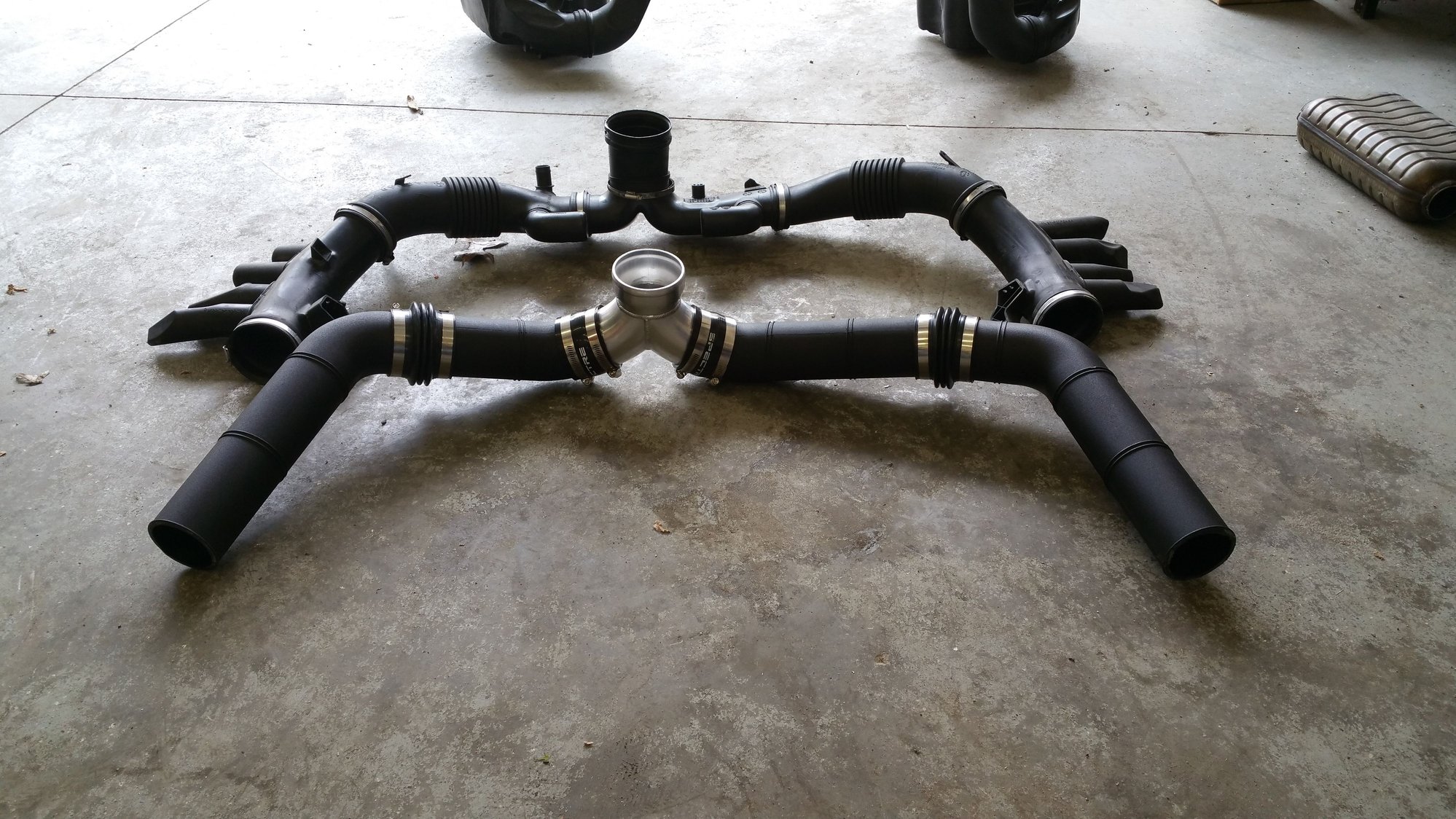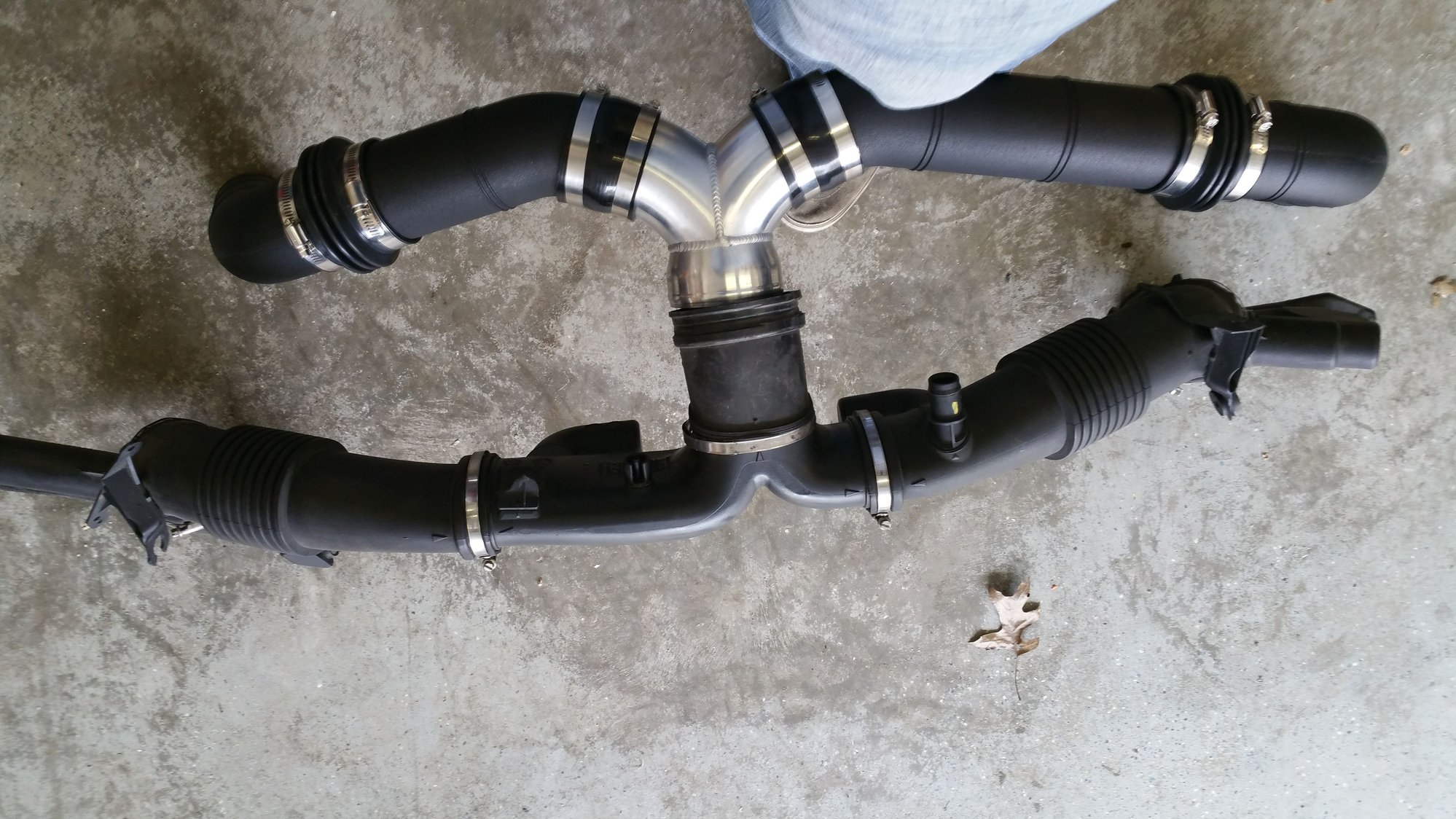My custom air intake progress
#1
#2
#3
And I don't think there's enough of a market for me to make another one. It is an extreme PITA making an intake for these cars. I've literally gone through over $1,000 in parts and LOTS of time and frustration trying to find the easiest, simplest, and best combination of parts to build one of these very easily. I just don't think I could buy the parts, build it, and resell it for enough of a profit to make my time worth it.
#4
#5
Ah yes, I forgot to mention that the whole reason I was doing this was to gain a bit of intake noise. That is what those little pockets on the stock tubes are there for, to quiet the intake noise.
I feel as if it needs a bit of a louder snort to it...that and doing away with the sound symposer ;p
I feel as if it needs a bit of a louder snort to it...that and doing away with the sound symposer ;p
The following users liked this post:
jagtoes (03-15-2016)
#6
#7
I would be curious to know if you lose power. Science says that you will.
"To the average hot-rodder, intake resonators go on the same pile as smog pumps, catalytic converters, exhaust gas recirculation valves and charcoal canisters. But imagine which pile the resonator would end up in if that same customizer knew it was more than a plastic muffler -- it's actually an important part of the engine's intake system, and may add a fairly significant amount of horsepower.
Design and Construction
"To the average hot-rodder, intake resonators go on the same pile as smog pumps, catalytic converters, exhaust gas recirculation valves and charcoal canisters. But imagine which pile the resonator would end up in if that same customizer knew it was more than a plastic muffler -- it's actually an important part of the engine's intake system, and may add a fairly significant amount of horsepower.
Design and Construction
- The resonator itself couldn't be simpler in design; it's basically just an expansion chamber or wide spot in the otherwise-smooth intake pipe. It may or may not contain some kind of baffle or plate, depending upon the design and the intent of the designers. Resonators come in two types: In-line resonators are open chambers that sit in the intake tube, while side-branch resonators are chambers that sit next to the tube and are connected to it via a small duct or channel.
- Most hot-rodders and car enthusiasts think of intake resonators as simple mufflers in the intake tube, devices designed to siphon all the awesomeness out of a car's sound track to appease soccer moms and senior citizens. That makes it a prime candidate for the "chuck-it" school of auto modification. After all, it's basically just a plastic tumor growing off of a tube that should by definition be as smooth and blemish free as possible. While sound control is indeed part of the resonator's job, the sound control itself is really more of a side effect of its primary purpose.
- Air flowing into your cylinder head's intake port doesn't move in a straight line while the valve is open, then politely stop in its tracks to await another valve opening. When the valve closes, the moving column of air slams into it, then compresses and bounces back like a spring. This pressure wave travels backward at the speed of sound until the intake runner opens up or it hits something, and then it bounces back toward the cylinder. This is the "first harmonic." The pressure wave actually bounces back and forth two or three more times before the intake valve opens again.
- The resonator in your intake is technically known as a Helmholz resonator, an acoustic device used to control pressure wave harmonics. Air bouncing back out of your engine and into the intake tube doesn't do it in a single pulse the way it would in a single intake runner; the multiple pistons put out pressure waves at their own intervals, and some of those are going to try to bounce back in while others are going out. The result is a "clog" or high pressure area in your intake tube that ultimately limits airflow through almost the entire rpm spectrum.
- Adding an expansion chamber to the intake tube forces air coming back out of the engine to slow down to fill the cavity, thus expending a great deal of its energy and slowing the pressure wave reversion. This slowdown allows fresh air to flow toward the engine without fighting pressure reversion waves the entire way, thus aiding in cylinder filling. Since these pressure waves are essentially sound, giving them a place to expend their energy before exiting the air filter box ends up dampening the intake noise and quieting the engine. Thus, the resonator helps to make the engine paradoxically quieter and more powerful."
The following 2 users liked this post by Queen and Country:
kj07xk (03-16-2016),
White Bear (01-30-2017)
Thread
Thread Starter
Forum
Replies
Last Post
Dorset_JAG
S-Type / S type R Supercharged V8 ( X200 )
5
03-13-2016 03:36 PM
rsq911
XJ6 & XJ12 Series I, II & III
1
03-12-2016 09:55 PM
thechief1967
XJ XJ6 / XJR6 ( X300 )
2
03-11-2016 07:46 AM
Currently Active Users Viewing This Thread: 1 (0 members and 1 guests)





